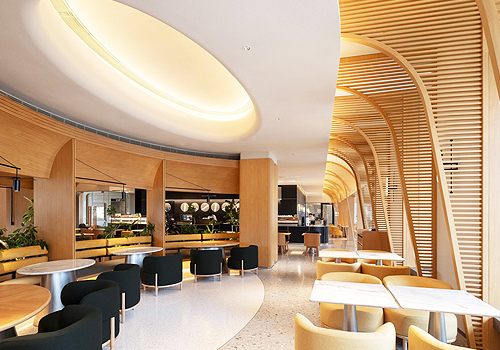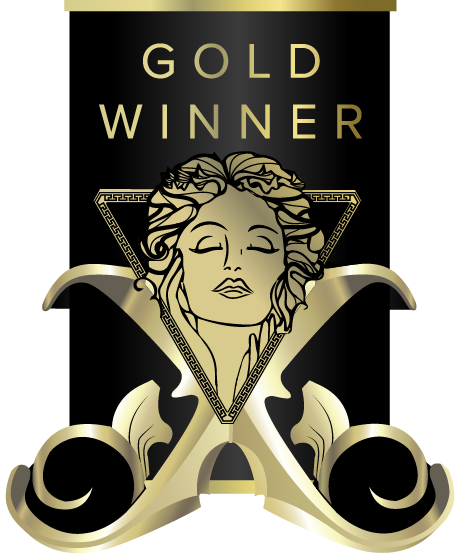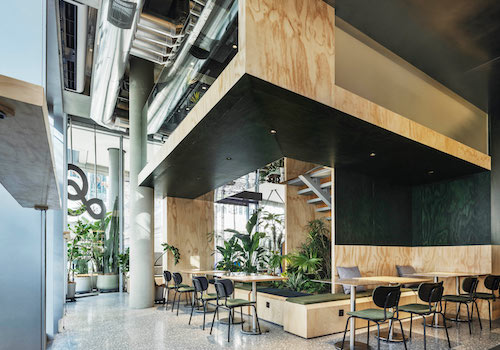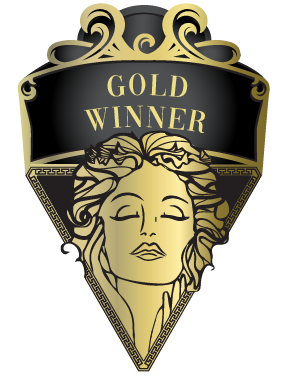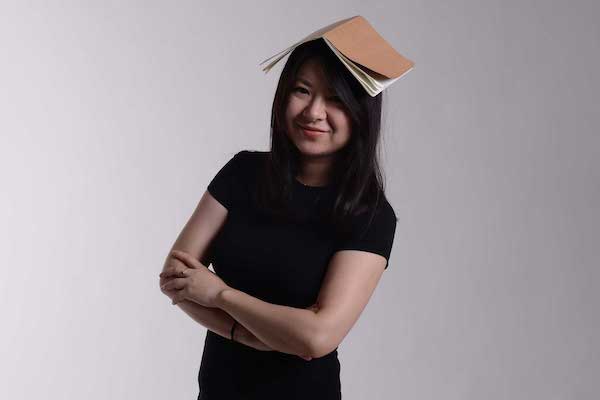
Interview
Vega Lee
1 Please give us a brief bio of yourself and your design background.
Prior to establishing Lee & Yu Design Studio, I used to work as a designer at multiple internationally renowned design studios in Shanghai, and was a key designer of many space and interior design projects such as catering, retail, residential and exhibition, etc. I have accumulated rich practical experiences in creating works that are integrated into the cultural, historical and the built environment where the projects are located, which gradually enabled me to establish my own unique design concepts.
2 What made you become/why did you choose to become a designer/artist?
Since childhood, I have been deeply passionate about drawing, always eager to sketch wherever I go. I find that visual information, such as graphics and images, is much more easily recognized and remembered by me than words. Perhaps it is my sensitivity towards color, materials and texture which has made me dream of becoming a fashion designer since childhood. When I grew up, I came to encounter a broader range of arts, e.g., architecture, art and humanity, etc. Near graduation, I decided to use my own hands to create spaces that belong to my own imaginations, this was the original intention of why I became a space designer.
3 Tell us more about your business/company, job profile, and what you do.
Based in Shanghai, China
4 What does “design” mean to you?
In fact, I don't adhere to a specific definition of 'design.' I believe that everyone possesses a natural inclination towards design, with the only difference being the level of ability each individual has. As a professional designer who should have mastered the way to self-expression a lot better, we have accumulated more practical experience and summaries in practice to convey our own aesthetics, values and attitude towards way of life.
5 What’s your favorite kind of design and why?
Well, I personally prefer the expression of
6 To you, what makes a “good” design?
Spaces with warmth, human-oriented, harmonious and coexistence with the environment. We refuse to sensationalize. The kind of design that can express the requirements of the project in a simple language, and archive the design objectives on the basis of completely functional which is one of the principles of good design.
7 Describe your design style and its main characteristics.
After nearly 20 years of precipitation, I have been involved in projects like humanities museums, art exhibitions, commercial, retail, residential, catering and so on. Years of practice have provided us with much clearer direction in our endeavors. Art, once seemingly distant, is now within our grasp. We are committed to creating spaces that radiate warmth, evoke emotions, and inspire creativity. These principles are at the core of our current projects and will guide our future work.
8 Tell us about your design process.
In every project we undertake, we prioritize closely listening to our clients and understanding the broader context. We develop both general and customized design strategies, paying keen attention to crucial factors such as geographic location, historical context, cultural background, environmental considerations, climate conditions, and consumer behaviors. This thorough analysis ensures that each project is not only unique but also surpasses our clients' expectations. Each project is unique with its own characteristics, regardless of its scale. After careful analysis and in-depth understanding of the client
9 Do you think your country and its cultural heritage has an impact on your design process?
China's rich cultural heritage and historical legends have profoundly influenced me. In today's China, where the "National Style" and "New Chinese Style" are gaining popularity in the design industry, we see immense potential for innovation and creativity. Our approach is not to simplistically adopt any available "doctrine" or blindly follow trends. Instead, we embrace a nuanced combination of Eastern and Western artistic techniques, a prevalent design philosophy in contemporary China that fosters creativity and innovation. Design is the embodiment of the overall aesthetic taste of a country or a nation. As a design firm rooted in China, we strive to learn from the strengths from the past, as well as a combination of the west and the east. For instance, in our recent space design project for a restaurant in Chengdu, a major city in Southwest China, we daringly incorporated the ancient Chinese architectural technique known as "mortise and tenon structure" as a form of artistic expression within the space. This choice serves as a vivid representation of ancient Chinese architectural ingenuity. We can always trust the wisdom of the ancients, this wood construction process can raise towers from the ground without using a single nail! Although it is no longer used in modern reinforced concrete buildings, this exquisite craft which contains deep ancient Chinese traditional architectural design ideas has long been enjoying great reputations and has become one of the symbols of ancient Chinese architectural arts. Around a thousand-year old temple in the center of the ancient city of Chengdu, such an art originated from thousands of years ago is a sublimation of the design in terms of cultural heritage and a tribute to traditional architectural art.
10 Congratulations! As the winner of the 2023 MUSE Design Awards, what does it mean to you and your company and team to receive this award distinction?
Recently, one of our residential interior design projects was honored in the MUSE Design Awards, marking our inaugural victory in the restaurant category. This international recognition not only highlights our growing reputation but also solidifies our firm's esteemed standing within the catering sector. Space design is a systematic project that includes many phases, all of our team members involved in this project are being inspired, and we are confident to create more excellent works to solidify our standings in the industry.
11 Can you explain a bit about the winning work you entered into the 2023 MUSE Design Awards, and why you chose to enter this project?
We built a two-storey restaurant in Hangzhou, China for the growing chain restaurant brand Gaga. The project integrates into the unique geographical environment of Hangzhou
12 What was the biggest challenge with this project?
The biggest challenge was how to perfectly preserve and further present the architectural details of Renzo Piano
13 How has winning an Award developed your practice/career?
While the MUSE Design Awards is not the first time that we have received in my career, we are extremely proud of it given the award
14 What are your top three (3) favorite things about our industry?
1) Finding the inspiration and brainstorming ideas in the early stages. 2) Observe the site the hear about more humanity backgrounds and the stories told by the the brand. 3) Ha-ha-ha, get the design contract concluded, of course!
15 What makes your country specifically, unique in the design industry?
As mentioned above, being one of the four ancient civilizations in the world, China has a very long history and culture heritage. In Chinese history, there are countless characters, celebrities, legends and aesthetic tastes of both elegance and folklore. Rich historical deposits and long cultural heritage provide inexhaustible resources and examples in the space design universe, providing quite unique and valued soil for Chinese designers to exert their talents.
16 Where do you see the evolution of design industry going over the next 5-10 years?
As a matter of fact, the concepts of
17 If you were a student entering this industry or an aspiring MUSE Design Awards submitter, what advice would you give them?
Design knows no borders and boundaries. For the new Chinese designers or professional students, we suggest that both inner and outer knowledge to be studied at the same time, it means not only to master professional skills, but also by way of going through continuous learning, understanding, experiences and explorations of traditional Chinese culture, these are all crucial courses to be taken to become a successful design. Similarly, MUSE Design Awards, being an internationally authoritative design award its original intention is to promote industry idea exchanges, encourage competition and to promote the development of the industry while taking its responsibilities. Therefore, we believe that we can provide distinguished thoughts, ideas and concepts, while highlight the traditional Chinese characteristics and historical culture of the country, and more importantly, creating value for the client. Not matter the size of the project, it has the potential to win recognition over the judges.
18 What resources would you recommend to someone who wants to improve their skills in the design industry?
I personally prefer to understand
19 Tell us something you have never told anyone else.
It seems that I have no secrets to hide!
20 Who has inspired you in your life and why?
My husband has been pivotal in broadening my understanding of design, teaching me that, ultimately, there are no boundaries between different design fields. He has shown me that art isn't confined to graphics alone; compelling content can also spark design inspiration. It's important to note that as a professional editor, his deep comprehension and interpretation of various cultures have empowered me to discern nuances and glean insights beyond the surface, enriching my approach to design on a profound level.
21 What is your key to success? Any parting words of wisdom?
The key to success: Believing in the strength of teamwork. All members on the team work closely with each other, performing his or her duties towards the same goal. Listen to the client
22 Do you have anything else you would like to add to the interview?
